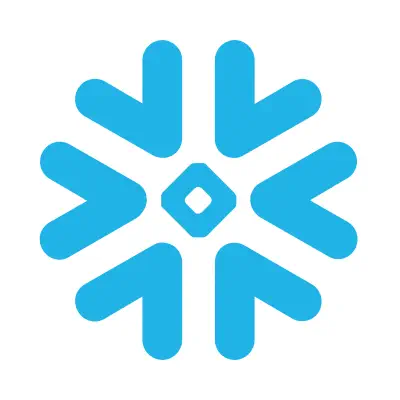
Snowflake Overview
Snowflake is a cloud-based data warehousing and analytics platform that enables organizations to store, manage, and analyze large volumes of structured and semi-structured data. It offers a unique architecture that separates compute and storage, allowing for scalability, flexibility, and cost-effectiveness in handling diverse data workloads.
Key Features of Snowflake
- Cloud-agnostic platform: Run on AWS, Azure, or Google Cloud without vendor lock-in
- Support for semi-structured data: Native support for JSON, Avro, and other semi-structured data formats
- Secure data sharing: Share live, governed data across organizations without moving or copying it
- Pay-per-second pricing: Fine-grained billing based on actual usage, allowing for cost optimization
What Makes Snowflake Unique
- Multi-cluster shared data architecture: Separates storage and compute resources for independent scaling and optimization
- Automatic performance optimization: Built-in query optimization and caching for improved performance
- Data marketplace: Access and monetize third-party data sets through Snowflake Data Marketplace
- Time travel and zero-copy cloning: Access historical data and create instant copies of databases without additional storage
Is Snowflake Right for Me?
Signs You Need Snowflake
- Multiple databases and data warehouses across the organization
- Difficulty in combining and analyzing data from different systems
- Slow and complex data integration processes
When Snowflake Isn’t the Right Fit
- Small data volumes (less than 1 TB)
- Limited analytical requirements
- Primarily using spreadsheets for data analysis
Customizing Snowflake
- Virtual warehouses: Create and resize compute clusters to match specific workload requirements
- Role-based access control: Define granular access permissions for users and groups
- Custom functions: Develop user-defined functions (UDFs) in SQL, JavaScript, or Java
- External functions: Integrate with external services and APIs for advanced data processing
- Snowpark: Build data applications using familiar programming languages like Python, Java, and Scala
Is Snowflake Worth It?
Snowflake is worth it for organizations that need to scale their data storage and analytics capabilities rapidly, especially those dealing with large volumes of structured and semi-structured data. Its separation of storage and compute resources, along with its ability to handle diverse workloads simultaneously, can lead to significant cost savings and performance improvements for data-intensive operations. However, for small businesses with limited data needs or those already heavily invested in on-premises solutions, Snowflake's cloud-native approach and pricing model might not align with their current infrastructure or budget constraints.
How Much Does Snowflake Cost?
Competitors to Snowflake
| Vendor | Reasons to Consider | Best For |
|---|---|---|
| Databricks | Strong in data engineering and machine learning workloads | Organizations with heavy focus on data science and AI/ML applications |
| Google BigQuery | Serverless architecture with powerful analytics capabilities | Companies already invested in Google Cloud ecosystem or needing real-time analytics at scale |
| Amazon Redshift | Tight integration with AWS services and familiar SQL interface | AWS-centric organizations with existing investments in the AWS ecosystem |
| Azure Synapse Analytics | Unified analytics platform with strong integration to Microsoft ecosystem | Organizations heavily invested in Microsoft technologies and Azure cloud |
| Cloudera | Comprehensive data platform with both on-premises and cloud options | Enterprises requiring hybrid or multi-cloud deployments with legacy system integration |
Open Source Alternatives to Snowflake
| Projects | Reasons to Consider | Best For |
|---|---|---|
| Apache Hive | Data warehouse software facilitating reading, writing, and managing large datasets | Hadoop-based environments and organizations with existing investments in the Hadoop ecosystem |
| Trino (formerly Presto SQL) | Distributed SQL query engine for big data, supporting multiple data sources | Organizations needing to query data across various sources without data movement, ideal for data lakes |
| ClickHouse | High-performance columnar OLAP database management system | Organizations with large-scale data analysis needs and technical expertise to manage complex systems |
| Apache Druid | Real-time analytics database designed for fast slice-and-dice analytics | Companies requiring sub-second query responses on large datasets, such as in AdTech or IoT scenarios |
